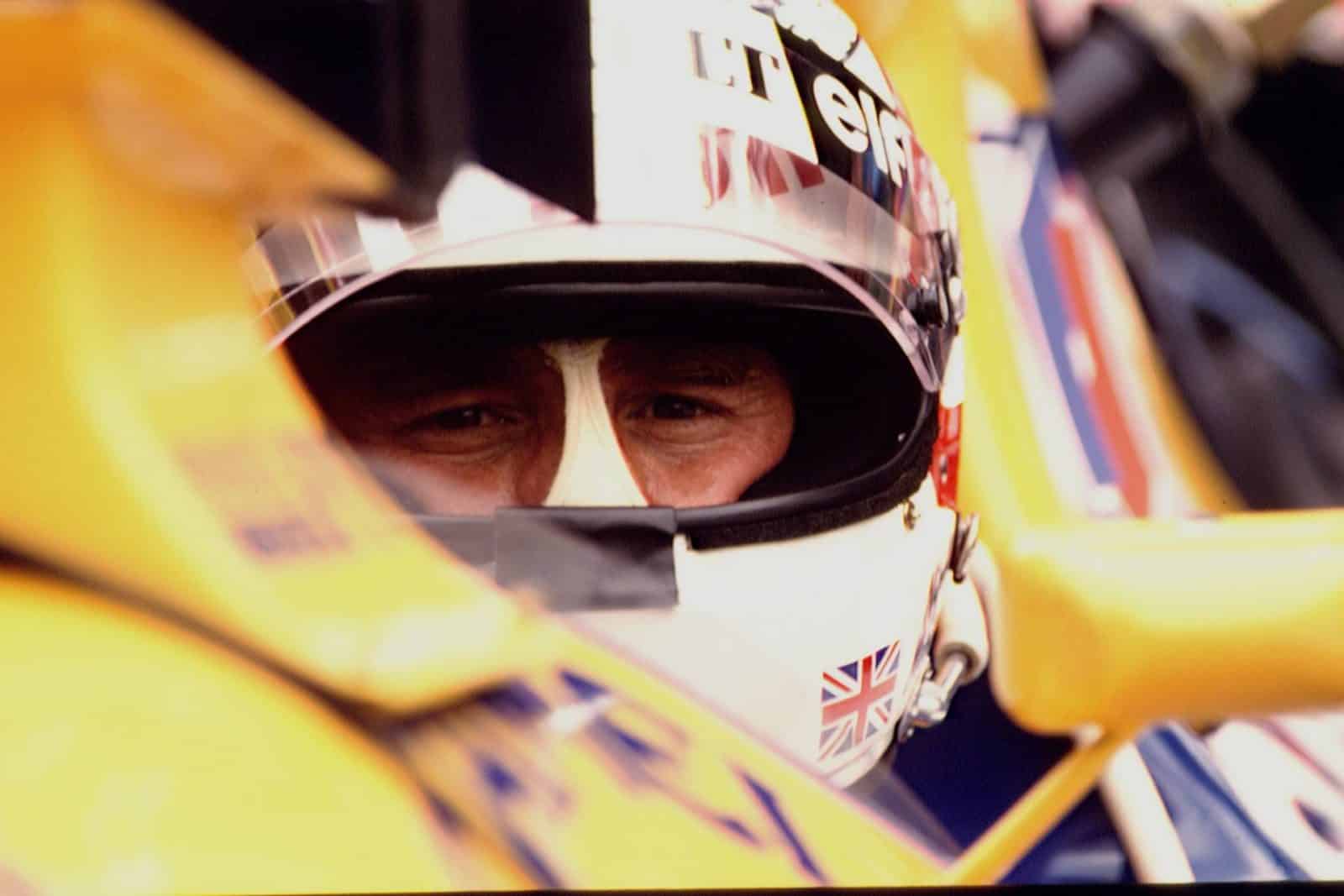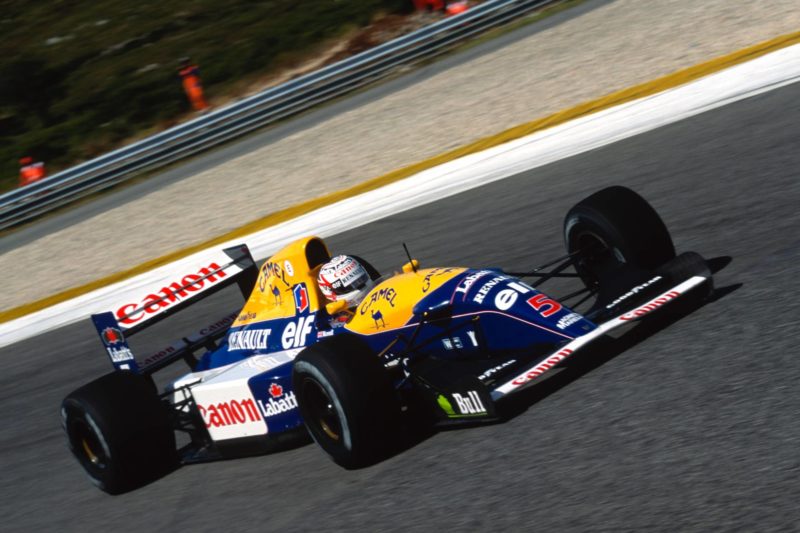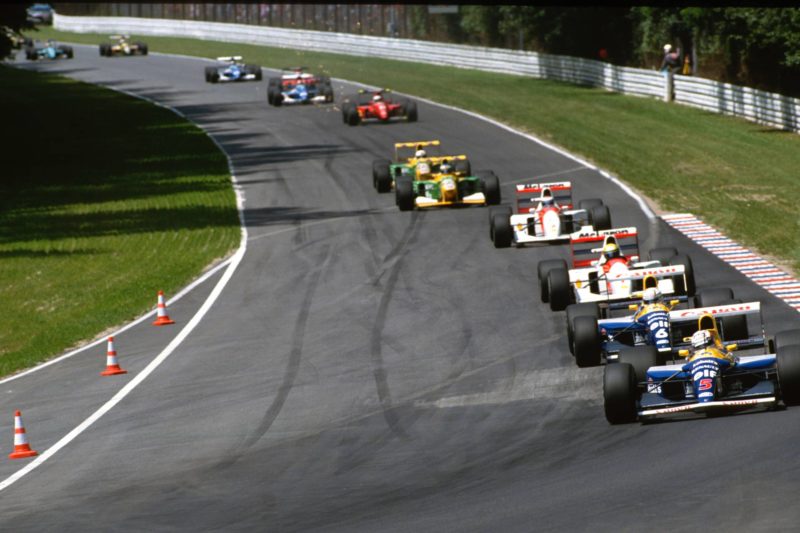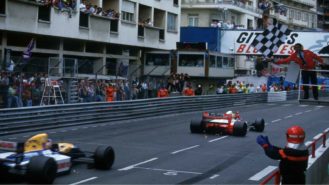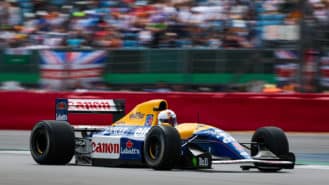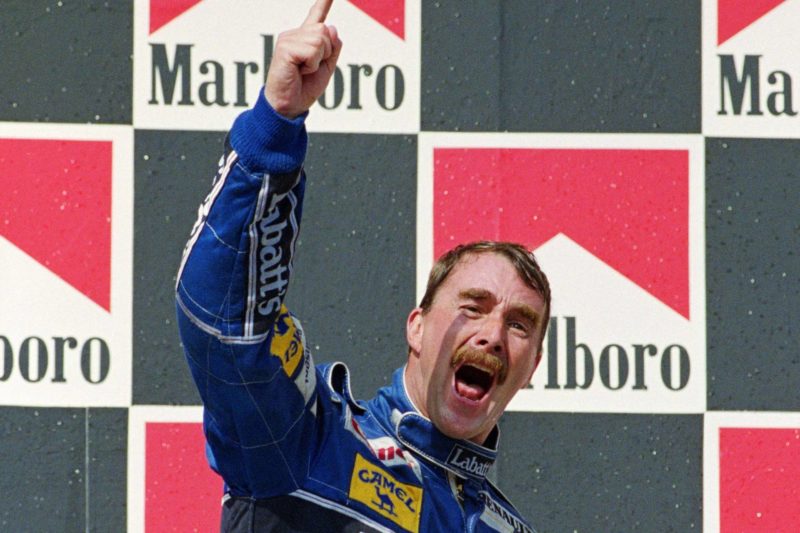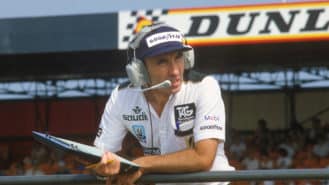Brown: “We were all right in the dry, but when it got very wet, Schumacher started to reel him. We were all wondering what was going on; talking to Nigel after the race, so was he. He couldn’t understand where Schumacher was getting his times from. In true Nigel fashion, he decided he must be doing something wrong and so started driving on all the weird bits of the circuit, off-line everywhere. He found a load of grip that way and went faster again.”
On the track at least, it seemed Mansell had it all under control — and some of it under wraps…
Newey: “He developed a couple of things that Patrick and I were slow to realise. There were various knobs in the cockpit that allowed you to change things such as ride height and the suspension settings. What Nigel would do was put them in one position, which is what would go down on the set-up sheets because, when you looked in the cockpit, that’s where they were – we didn’t actually record those particular channels on the telemetry – then he’d go out and, with David Brown’s blessing, change them on the circuit.”
This developed to the point where Nigel and David would have a communal debrief as normal, them on one side of the table, Riccardo and his engineer on the other, but whatever they talked about was a load of rubbish mainly designed to fool Riccardo. Then they’d go away and have their proper debrief. From a team point of view, it was not constructive; from Nigel’s point of view, it was quite smart.
Brown: “We often discussed the car in relaxed circumstances out of hours. I don’t think it was to the detriment of anybody in the team. Nigel required a bit of personal attention, and if that’s what it took to get the best out of him as a driver, then I was happy to meet him in the evening. As far as debriefs are concerned, there was a structure and we adhered to that structure.”
Newey: “What Nigel was doing was running the front much lower. He’d get a fair bit of performance out of it, though it would make the car more difficult to drive. Then in the debriefs Riccardo would say, `I think I’ll try going lower at the front’, and Nigel would say, ‘You don’t want to do that, it’s much quicker Wit’s higher.”
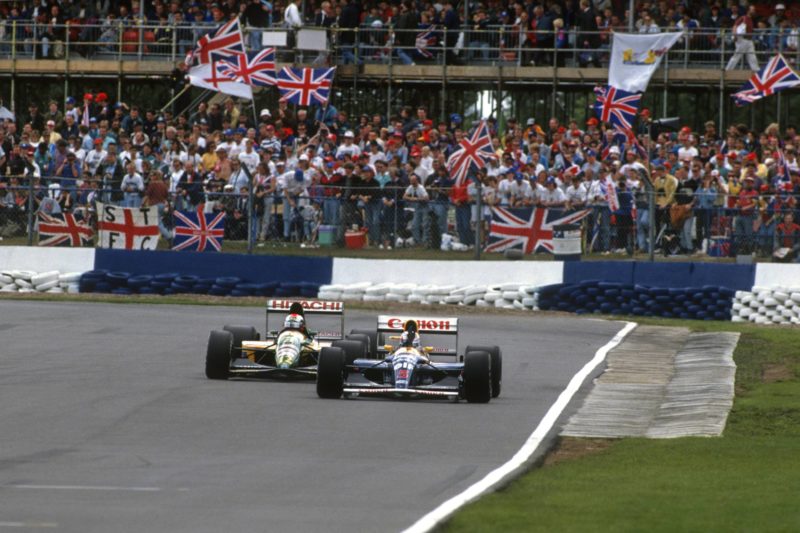
Mansell took another home win at Silverstone
Mansell’s run of success eventually came to an end in round six, Monaco, courtesy of a late pit-stop caused by a loose wheel nut…
Newey: “It was the result of a very stupid thing. One of the ties on the tyre blanket had got trapped between the wheel and the disc bell when the nut was being done up on the grid — bits of strand were still there after the race. As a consequence, the nut worked loose.”
It was the ‘nut behind the wheel’ that failed in Canada, where Mansell made his only major mistake of the season…
